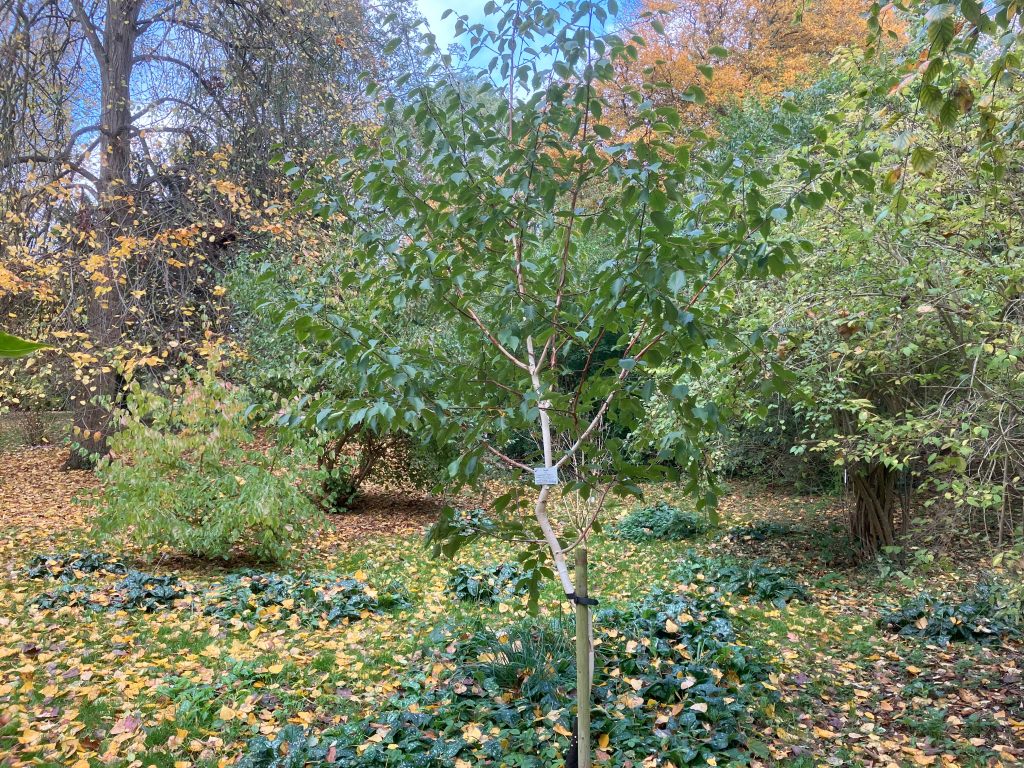#489 (U9) HIMALAYAN BIRCH
Betula utilis var. jacquemontii ‘Grayswood Ghost’

Planted: 2014
This tree is in the centre to the west of the Syringa Avenue and was damaged when a poplar tree fell nearby, caused by storm David on 18th January 2018.
‘Greyswood Ghost’ is a cultivar. The propagation material was collected from a specimen in Grayswood Hill, Haselemere, Surrey just before the tree died in 1985, and then sold commercially.
Betula utilis is native to the western Himalayas , growing at elevations up to 4,500 m. The Latin utilis means “useful”, and refers to the many uses of the different parts of the tree. The white, paper-like bark was used in ancient times as a writing surface for manuscripts of Sanskrit. Selected varieties are used for landscaping even while some areas of its native habitat are being lost due to overuse of the tree for firewood.
Described and named by botanist David Don (1799 – 1841) a Scottish botanist in 1825. Specimens collected by Nathaniel Wallich (1786 – 1854) a Danish surgeon and botanist, from Nepal in 1820.
A Deciduous tree with white, paper-like bark Close-up showing lenticels.
In native habitat, forms forests, growing as a shrub or tree reaching up to 20 m tall.
Leaves are ovate, 5 to 10 cm long, with serrated margins, and slightly hairy. Flowering occurs from May to July, with only a few male catkins, and short, single (sometimes paired) female catkins. The perianth has four parts in male flowers, and is absent in the female flowers. Fruits ripen in September and October.
The thin, papery bark is very shiny, reddish brown, reddish white, or white, with horizontal lenticels which peels off in broad, horizontal belts.
The wood is very hard and heavy, and quite brittle. The heartwood is pink or light reddish brown.
Many named varieties and cultivars are used in landscaping throughout the world. In the eastern end of the tree’s native distribution, several forms have orange- or copper-colored bark. Betula utilis var. jacquemontii, from the western end of the native habitat, is widely used because several cultivars have especially white bark.
‘Greyswood Ghost’ has been awarded the Royal Horticultural Society’s Award of Garden Merit.
‘